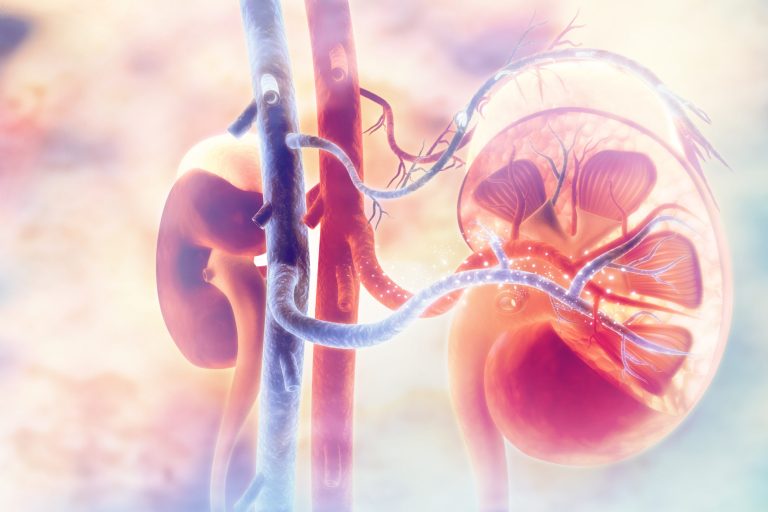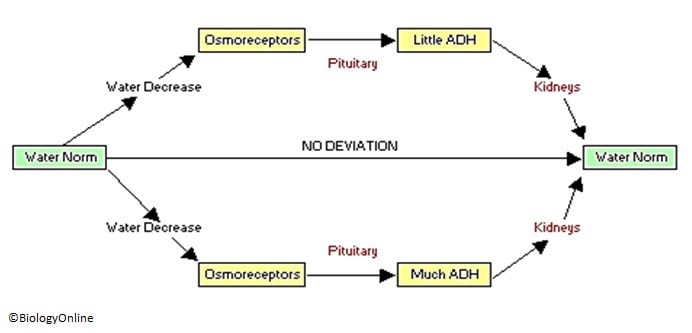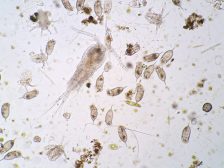Homeostasis of Organism Water Regulation

Homeostasis by water regulation
Table of Contents
Osmoregulation
Osmoregulation is the regulation of water concentrations in the bloodstream, effectively controlling the amount of water available for cells to absorb.
The homeostatic control of water is as follows
- A change in water concentration leads to active via negative feedback control
- Osmoreceptors that are capable of detecting water concentration are situated on the hypothalamus next to the circulatory system
- The hypothalamus sends chemical messages to the pituitary gland next to it.
- The pituitary gland secretes anti-diuretic hormone (ADH), which targets the kidney responsible for maintaining water levels.
- When the hormone reaches its target tissue, it alters the tubules of the kidney to become more / less permeable to water
- If more water is required in the bloodstream, high concentrations of ADH make the tubules more permeable.
- If less water is required in the bloodstream, low concentrations of ADH make the tubules less permeable.
This is illustrated by the flow chart below

Negative Feedback Control of Water in Animals
Evolutionary Adaptations in Water Regulation
Some of the Adaptation tutorials investigate certain evolutionary adaptations that organisms have achieved through natural selection. This looks at ways in which both animals and plants can be better adapted to cope with extreme environments (desert or wetlands). These changes can be behavioral, physical or anatomical, and in some way promote water regulation. Both plants and animals appear to have adapted to their environment.
More Homeostasis
The body also contains negative feedback control mechanisms for the control of blood sugar concentration and temperature regulation. These types of homeostasis are described on the next tutorials, Sugar Homeostasis and Temperature Regulation in Animals, respectively.
You will also like...

Freshwater Communities & Plankton
Planktons are microscopic organisms that live suspended in aquatic habitats. There are two groups: the phytoplanktons an..

New Zealand’s Unique Flora
If New Zealand has lots of unique animals, it's also got a whole lot of unique plants. Find out more about some of them,..

Community Patterns
Learn about community patterns and the ecological factors influencing these patterns. Revisit some of the ecosystems you..

Leaves
Leaves are the major photosynthetic organ of a plant. Apart from that, they are also crucial to water movement. In this ..

Primitive Animals
Life, as we know it today, is presumed to have started in the sea and many of them were likely eukaryotic animal-like or..

Still Water Community Plants
This tutorial looks at the adaptations of freshwater plants for them to thrive in still water habitats. Familiarize your..
